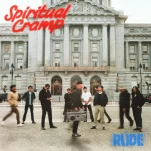Lesbianism Is More Mainstream Than Ever, but TV Is Moving Backwards
Photo Courtesy of CBS
As someone who has been paying very close attention to sapphic representation for about a decade, I can tell you, with absolute certainty, that lesbianism has never been more visible in mainstream media than in our current cultural moment. From Reneé Rapp officially coming out as a lesbian on SNL to Chappell Roan’s meteoric rise to the fantastic double feature that was Drive Away Dolls and Love Lies Bleeding, lesbian representation is everywhere at the moment. And while these other industries are catching up by finally embracing specifically sapphic storylines or performers, TV seems to be falling behind.
Unfortunately, this is not a new realization, but the culmination of belts tightening over the last few years as the streaming landscape has moved further and further away from being the representation haven it once was. From The CW canceling nearly their entire slate of sapphic-including series to the cancelation and deletion of shows like Willow or Grease: Rise of the Pink Ladies and the un-renewal of A League of Their Own, lesbianism on screen has gotten more and more difficult to come by for the first time since the post-Lexa reckoning that brought more women-loving-women to our TV screens than ever before.
The media watch-group GLAAD recently released their Where We Are on TV report, which measured another decline in LGBTQ+ representation on screen following a similar dip in 2022-2023’s report. Last year, there were 596 LGBTQ+ characters across cable, broadcast, and streaming. This year that figure dipped to only 468 characters. And while it’s undeniably concerning that these numbers are plummeting so quickly, the most heartbreaking statistic is the percentage of these characters that are gone for good: 36% of all queer characters counted across TV from June 1, 2023 to May 31, 2024 will not be returning, either due to unexpected cancellation, a planned series finale, or by simply being part of a limited series. The report states that 36 total series featuring LGBTQ+ characters were canceled in that timeframe.
-

-

-

-

-

-

-

-

-

-

-

-

-

-

-

-

-

-

-

-

-

-

-

-

-

-

-

-

-

-

-

-

-

-

-

-

-

-

-

-








































